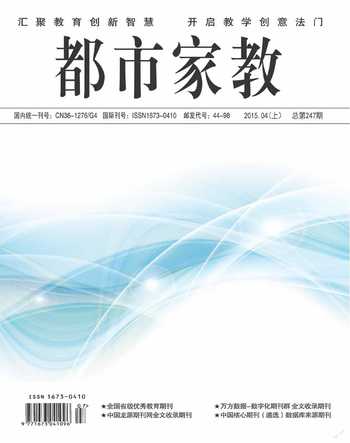TheComparisonsbetweenEnglishandChineseVowels
贾静
Abstract: English and Chinese have distinctive pronunciation systems. Usually, this kind of difference poses difficulties to language learners. Throughout the comparison between the two systems, students can get a general knowledge of their differences, which may help them to understand what causes their difficulties during pronunciation.
Key words: English and Chinese pronunciation; comparison; English pronunciation learning
In the description of phonology, the basic unit of English is phoneme including vowel phonemes and consonant phonemes; while in Chinese, the basic unit is syllable consisted of initials, finals and tone. Technically, these sounds in Chinese are identical to their English counterparts. Initials represent consonants, and most of finals are treated as vowels, except some of them which are consisted of vowels and nasal consonants. Here, we just compare the vowels (finals) within the two languages.
First, we talk about the situation of monophthong. There are 12 English vowels and 6 Chinese vowels. In Chinese, though there are fewer vowels, each one contains more functions and variants, so a single vowel represents more the possible phonetic areas, e.g., there are three central vowels in English; while only one (e) is in Chinese, but the former has five variants. Generally speaking, the difference between the variants of a Chinese vowel is more obvious than that of an English vowel.
There are some distinctive properties English vowels carry but Chinese vowels do not, like the degree of lip rounding or spreading, the tongue position and tense. In English, tense can distinguish meaning, e.g. /it/ (it) and /i:t/ (eat), actually, they are two different sounds in nature. On the contrary, the vowels in Chinese do not concern such subtle differentiations. Therefore, Chinese students can hardly sense the minor differences between each pair because of such accuracy in English pronunciation.
Second point is about diphthong. Compared with English, the degree of duration and intensity between the two sounds of a diphthong in Chinese is not really clear. So, Chinese students are more likely to take shorter time to pronounce the two phones of an English diphthong, so the transition between the two does not clearly be sensed. They are used to concentrating on the second one, which usually should be pronounced vaguely. It points out that Chinese students should consciously pronounce the first sound stronger, and then slowly glide to the second one with weaker voice.
There are no centering diphthongs in Chinese, like /i?/, /ε?/ and /u?/ which Chinese students have difficulties to pronounce. Affected by his habit of pronouncing Chinese words, a Chinese student unconsciously transfer his way of pronunciation habit to Englishs, say, /i?/ and /u?/ are usually replaced by Chinese diphthongs like ie, ue and uo.
The last one is about triphthong. English has 5 triphthongs, namely /ei?/, /?i?/, /?u?/, /ai?/, /au?/; its counterparts are iao, iou, uai, uei. They have different pronunciation features. English triphthongs are composed by five closing diphthongs and a schwa /?/, so each of them has two syllables. The middle sound is weaker than the both side sounds when pronounced. The order of their duration is the first, the last and the middle. Chinese triphthongs are composed by three independent sounds. The middle sound is stronger than the both side sounds when pronounced.
Above all, that is a brief introduction of the differences between Chinese vowels and English vowels in their static sate; therefore, we also need to focus on the process of their dynamic usage to get more detailed distinctions between them. And the purpose is to direct students in English pronunciation learning.
Bibliography:
[1]Lass,Roger.Phonology.Cambridge:
Cambridge University
-Press,1984.
[2]林煮,王理嘉.語音学教程,北京:北京大学出版社,1999.
[3]王振昆,谢文庆.语言学教程,北京:外语教学与研究出版社,1998.
[4]高玉华.英汉元音比较——中国学学生习英语元音的困难,山东外语教学,1988,Z1: 81-88.

